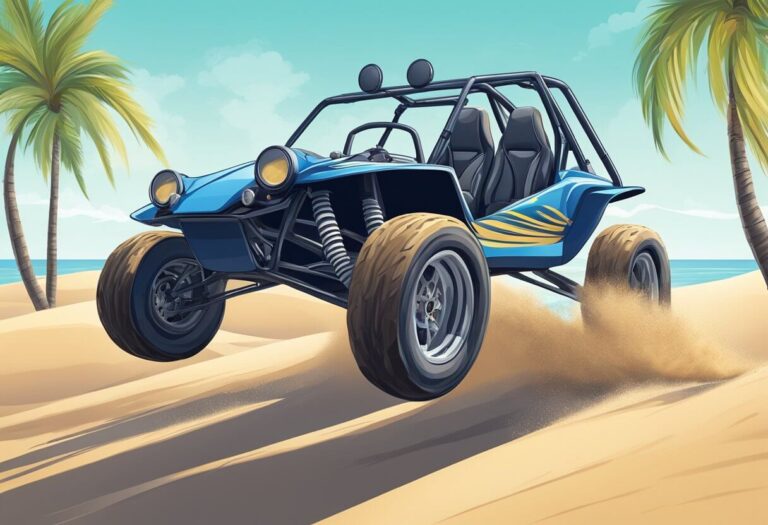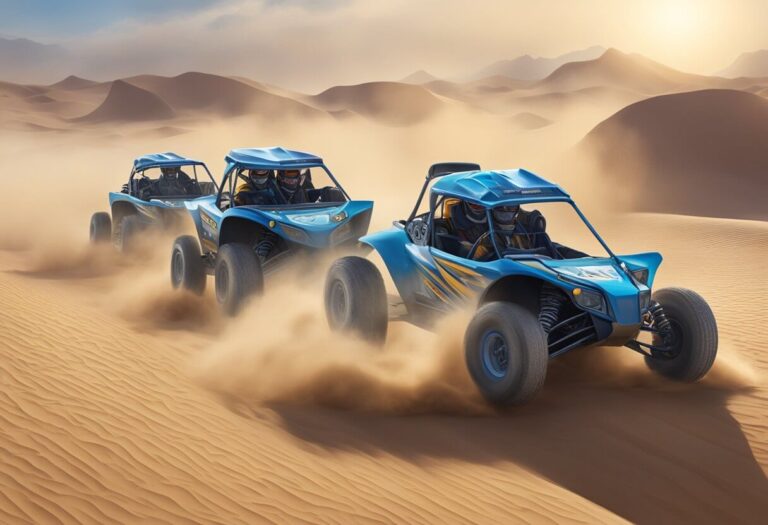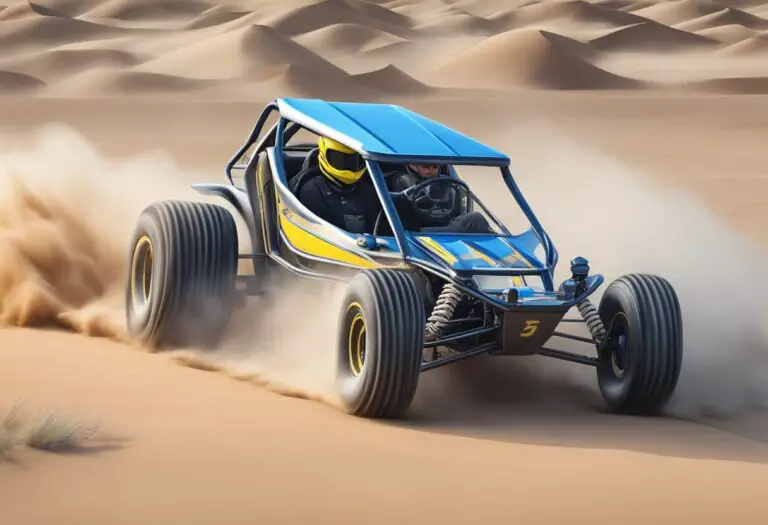Dune Buggy Racing: An Adrenaline-Pumping Adventure
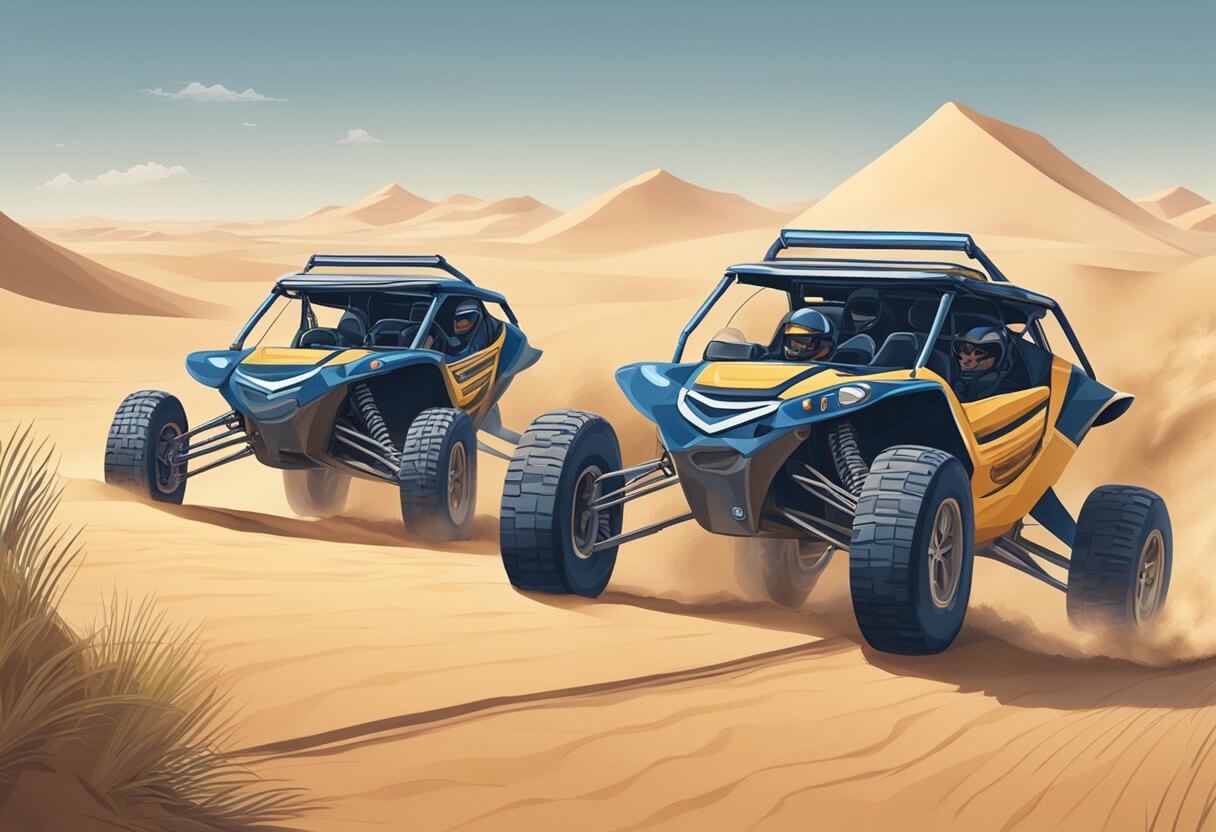
Dune buggy racing is an exciting and adrenaline-fueled sport that has been gaining popularity in recent years. It involves driving a specially designed vehicle called a dune buggy across sand dunes, rough terrain, and other challenging off-road environments. Dune buggy racing can be enjoyed by people of all ages and skill levels, and it is a great way to experience the thrill of off-road driving.
One of the main attractions of dune buggy racing is the unique driving experience it offers. Unlike traditional racing, dune buggy racing takes place in an unpredictable and constantly changing environment. Drivers must navigate steep inclines, sharp turns, and other obstacles while maintaining control of their vehicle. This requires a combination of skill, focus, and quick reflexes, making dune buggy racing a challenging and rewarding sport.
Another great thing about dune buggy racing is that it can be enjoyed in a variety of different settings. From desert dunes to forest trails, there are countless places where dune buggy enthusiasts can test their skills and push their vehicles to the limit. Whether you are looking for a fun weekend activity or a serious racing challenge, dune buggy racing is a great way to experience the thrill of off-road driving.
History of Dune Buggy Racing
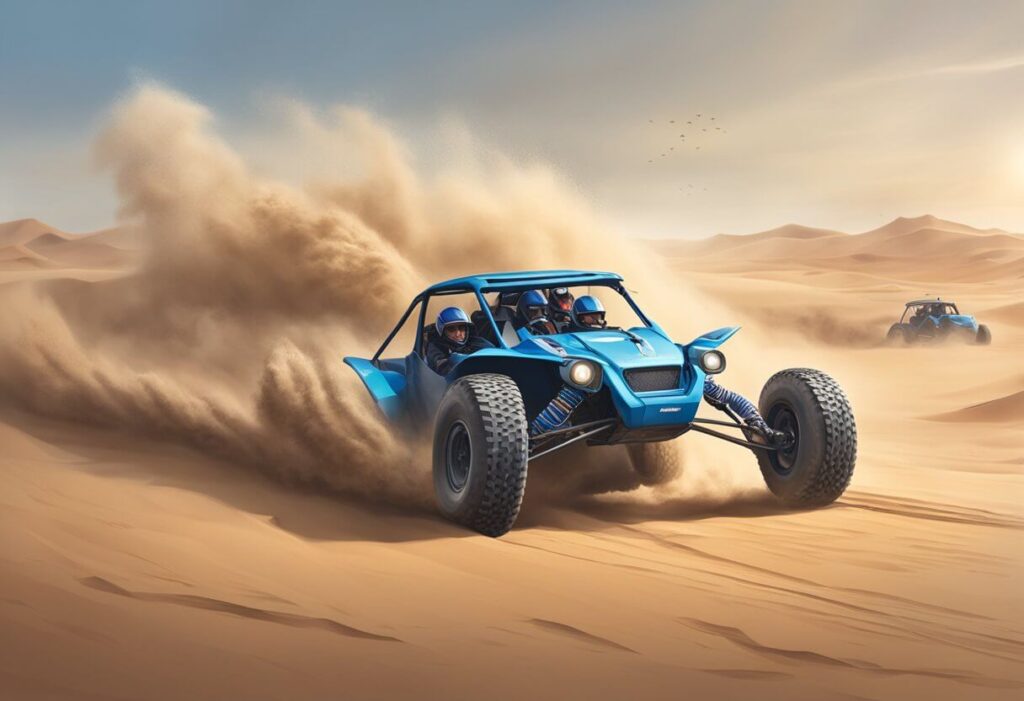
Origins and Evolution
Dune buggy racing has its roots in the 1950s and 60s when people would take their cars to the beach and modify them for sand driving. These modifications included welding two wheels together at the rear for more traction and other modifications to “float” on the sand. The first dune buggy was created by Bruce Meyers in 1964, who designed it for desert racing. He produced the Meyers Manx dune buggy in California, which was a kit car applied to shortened chassis of Volkswagen Beetles.
The popularity of dune buggy racing grew rapidly, and it became a recognized sport in the United States in the 1970s. The sport has evolved over the years, with new technologies and materials being used to build faster and more durable buggies. Today, dune buggy racing is a popular sport in many countries, with various tournaments and competitions being held throughout the year.
Key Figures in Racing History
Bruce Meyers is considered the father of dune buggy racing, having created the first dune buggy. His Meyers Manx dune buggy became an instant hit, and he went on to win several off-road races with it. Other notable figures in dune buggy racing include Larry Minor, who won the Baja 1000 race multiple times, and Parnelli Jones, who was a successful race car driver and builder of off-road vehicles.
In recent years, new names have emerged in the world of dune buggy racing, including Rob MacCachren, who has won multiple off-road races, and Bryce Menzies, who set a world record for the longest off-road jump in a trophy truck. These racers continue to push the limits of what is possible in dune buggy racing, inspiring new generations of racers to take up the sport.
Overall, dune buggy racing has a rich history and continues to evolve with new technologies and racers pushing the limits of what is possible. It is a thrilling sport that combines speed, skill, and a love of off-road driving.
Dune Buggy Racing Basics
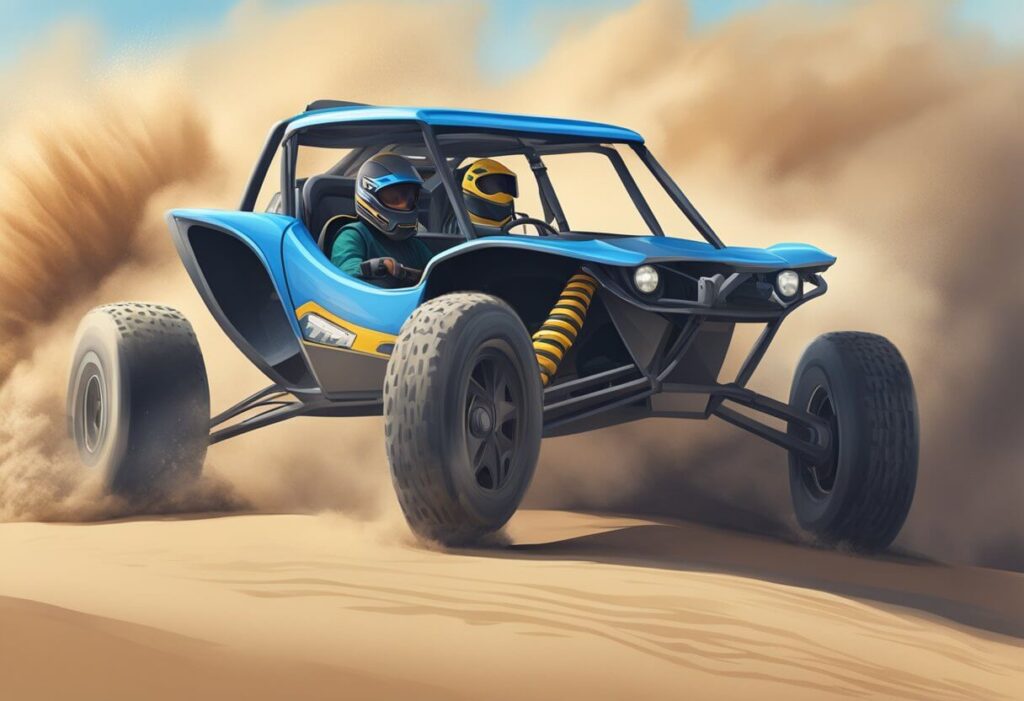
Understanding the Sport
Dune buggy racing is an off-road motorsport that involves driving specialized vehicles called dune buggies across sand dunes and other challenging terrain. The sport is popular in many parts of the world, including the United States, Europe, and Australia. Dune buggy racing is known for its high speeds, thrilling jumps, and challenging courses.
Types of Dune Buggies
There are many different types of dune buggies used for racing, each with its own strengths and weaknesses. Some popular types include sand rails, which are lightweight vehicles built on a tubular steel frame with large, knobby tires; and baja bugs, which are modified Volkswagen Beetles with reinforced suspensions and other upgrades.
Racing Formats
Dune buggy racing can take many different forms, depending on the location, the type of vehicle, and the preferences of the racers. Some races are held on closed courses, while others take place in open desert terrain. Some events are timed trials, while others are head-to-head competitions. In some cases, racers may compete in teams, while in others they race individually.
To be successful in dune buggy racing, drivers must have a combination of skill, experience, and a well-tuned vehicle. They must also be able to handle the unique challenges of racing on sand, such as the need for precise steering and the risk of getting stuck in soft spots. With the right equipment and training, however, dune buggy racing can be an exciting and rewarding sport for drivers of all ages and skill levels.
Equipment and Safety
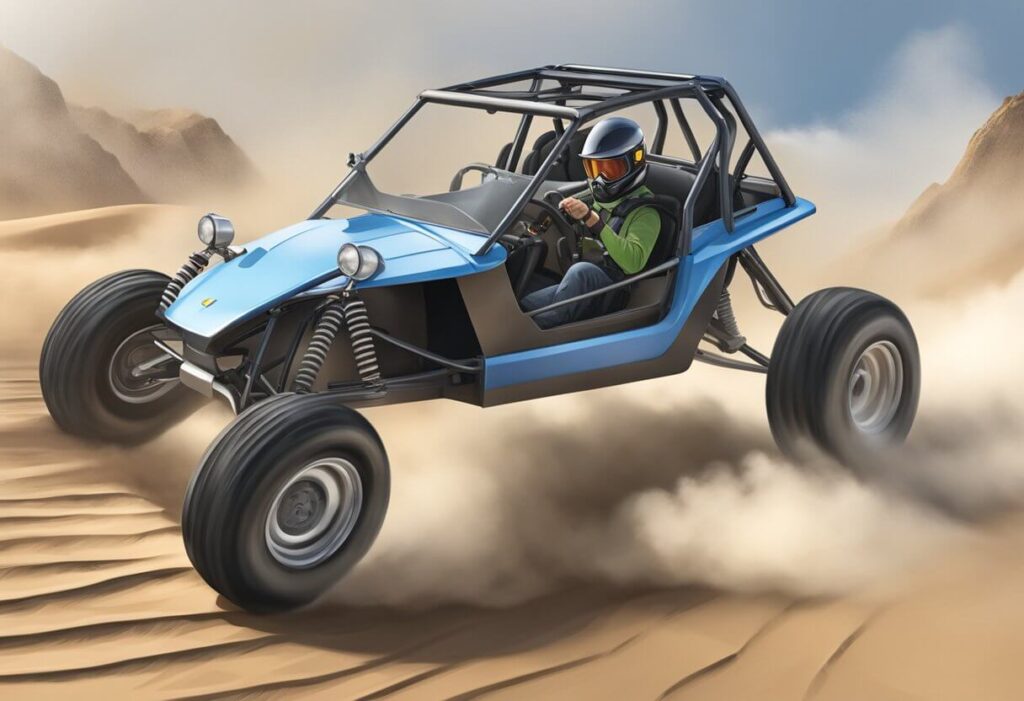
Essential Gear
Dune buggy racing is an exciting and exhilarating sport that requires proper equipment to ensure a safe and enjoyable experience. The following is a list of essential gear that every dune buggy racer should have:
- Helmet: A helmet is essential for protecting the head against injuries in the event of an accident.
- Eye protection: Goggles or sunglasses are necessary to protect the eyes from the sun, sand, and debris.
- Long-sleeved shirt and pants: These will protect the skin from sunburn, scratches, and other injuries.
- Gloves: Gloves provide a better grip on the steering wheel and protect the hands from blisters and injuries.
- Shoes: Closed-toe shoes with good traction are necessary to prevent slipping and injuries.
Safety Regulations
In addition to essential gear, dune buggy racers must also follow safety regulations to ensure their safety and the safety of others. The regulations may vary depending on the location of the race, but the following are some standard safety regulations:
- Roll cage: All dune buggies must have a roll cage to protect the driver and passengers in the event of a rollover.
- Seat belts: Seat belts are necessary to keep the driver and passengers securely in their seats.
- Speed limits: Dune buggy racers must follow speed limits to prevent accidents and injuries.
- Equipment requirements: Dune buggies must meet equipment requirements such as headlights, taillights, stoplights, turn signals, mirrors, seat belts, and windshield wipers.
Vehicle Maintenance
Maintenance of the dune buggy is essential to ensure its proper functioning and safety. Before every race, the racer should check the following:
- Tires: The tires should be properly inflated and have good traction.
- Brakes: The brakes should be in good working condition to ensure the dune buggy can stop quickly.
- Suspension: The suspension should be properly adjusted to provide a smooth and comfortable ride.
- Engine: The engine should be tuned up and in good working condition to ensure optimum performance.
By following these essential gear, safety regulations, and vehicle maintenance guidelines, dune buggy racers can have a safe and enjoyable racing experience.
Racing Techniques
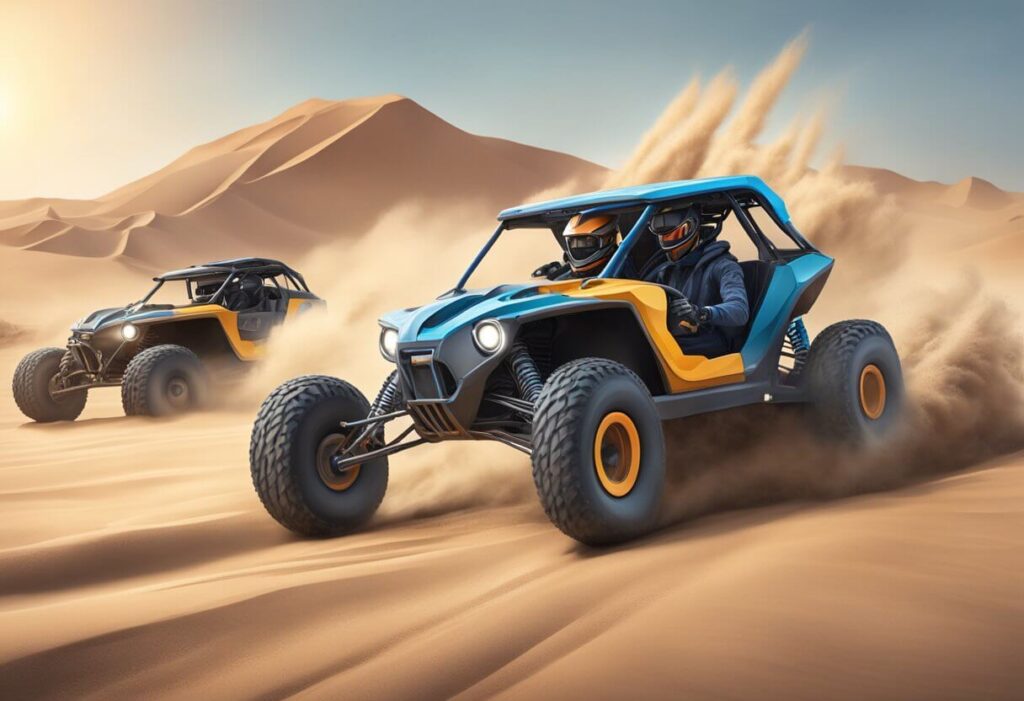
Driving Skills
To be successful in dune buggy racing, it is essential to have excellent driving skills. Drivers must be able to control the vehicle at high speeds and navigate through challenging terrains. They must also be able to maintain a steady pace and avoid any unnecessary risks that could result in accidents or damage to the vehicle.
One of the essential skills for dune buggy racing is the ability to drift. Drifting is the technique of intentionally oversteering the vehicle, causing the rear wheels to lose traction and slide sideways. This technique is commonly used in dune buggy racing to navigate sharp turns and corners quickly.
Navigating Different Terrains
Dune buggy racing takes place on various terrains, including sand, dirt, and rocky surfaces. Each terrain requires a different approach and technique to navigate successfully.
When racing on sand, it is essential to maintain a high speed to prevent getting stuck. Drivers must also be aware of the sand’s consistency and adjust their driving accordingly. For example, driving on wet sand requires a different technique than driving on dry sand.
When racing on rocky surfaces, drivers must be cautious and avoid hitting rocks that could damage the vehicle or cause an accident. They must also be aware of the vehicle’s suspension and adjust their driving to prevent unnecessary wear and tear.
Race Strategy
Having a solid race strategy is crucial for success in dune buggy racing. Drivers must be able to read the terrain and adjust their strategy accordingly. For example, if the terrain is particularly challenging, drivers may need to slow down and focus on maintaining control of the vehicle.
Another essential aspect of race strategy is pit stops. Drivers must plan their pit stops carefully to ensure that they have enough fuel and that the vehicle is in good condition. They must also be aware of their competitors and adjust their strategy accordingly.
In summary, dune buggy racing requires excellent driving skills, the ability to navigate different terrains, and a solid race strategy. With these techniques, drivers can increase their chances of success and enjoy the thrill of dune buggy racing.
Competitions and Events

Famous Races
Dune buggy racing has been a popular motorsport for decades, with many famous races and events taking place all over the world. One of the most well-known races is the Baja 1000, an off-road race that takes place in the Baja California Peninsula in Mexico. The race covers over 1,000 miles of challenging terrain and attracts competitors from all over the world. Another famous event is the Mint 400, a grueling off-road race that takes place in the deserts of Nevada.
International Competitions
Dune buggy racing is a popular sport in many countries around the world, with international competitions taking place on a regular basis. One of the most prestigious events is the Dakar Rally, a long-distance race that takes place in South America. The race covers thousands of miles of challenging terrain and attracts some of the best off-road drivers in the world. Another international event is the Abu Dhabi Desert Challenge, a five-day race that takes place in the deserts of the United Arab Emirates.
Local and Amateur Races
In addition to the famous races and international competitions, there are also many local and amateur dune buggy races that take place all over the world. These races are often organized by local off-road clubs and attract a wide range of competitors, from seasoned veterans to first-time racers. Some popular local races include the Fast Times at Farmington, an all-VW drag race and car show held in North Carolina, and the IOK Spring Fling Race, a sand drag race held in Ohio.
Getting Involved

Training and Preparation
Before getting involved in dune buggy racing, it is important to have some basic training and preparation. This includes getting familiar with the vehicle and its controls, as well as practicing driving on sand dunes. It is recommended to take a course or training program specifically designed for dune buggy racing.
Joining a Racing Club
One of the best ways to get involved in dune buggy racing is by joining a racing club. There are many clubs across the country that organize races and events for dune buggy enthusiasts. Joining a club not only allows racers to compete in organized events, but also provides an opportunity to meet other enthusiasts and learn from experienced racers.
Building Your Own Dune Buggy
For those who want to take their involvement in dune buggy racing to the next level, building their own dune buggy can be a rewarding experience. There are many resources available online and in print that provide instructions and guidance on building a dune buggy. It is important to ensure that the vehicle meets safety standards and regulations before racing.
The Future of Dune Buggy Racing
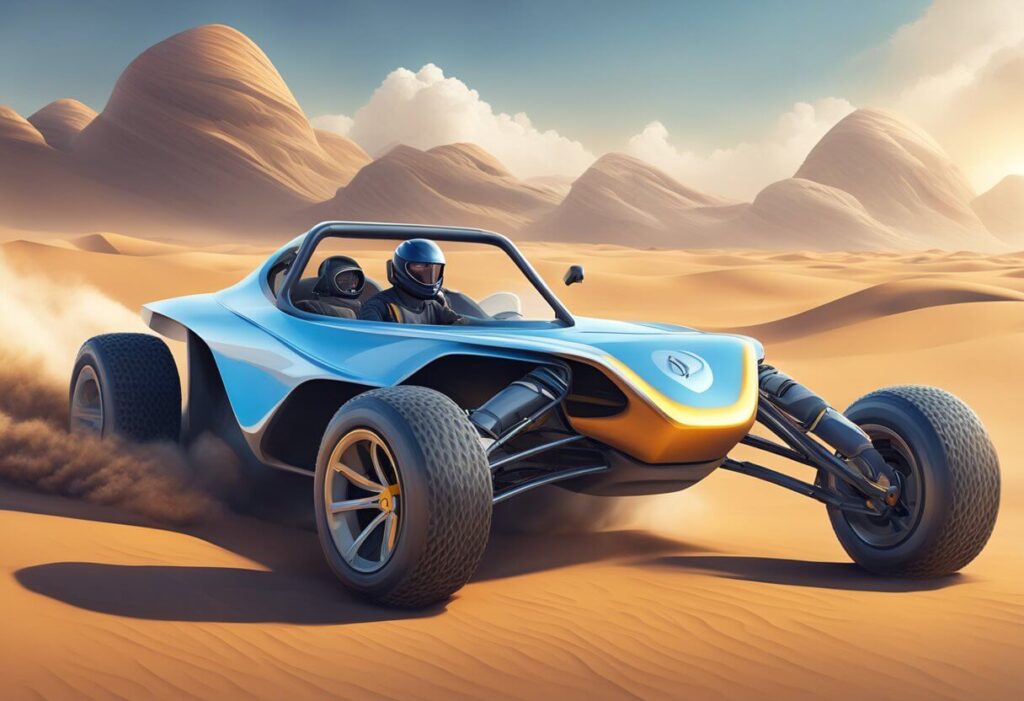
Technological Advancements
Dune buggy racing has come a long way since its inception in the 1960s. With the advent of new technologies, dune buggies have become faster, more efficient, and safer. One of the most significant advancements in dune buggy racing is the use of electric motors. Electric-powered dune buggies have been gaining popularity due to their low environmental impact and high performance. Companies like Meyers Manx have already started producing all-electric dune buggies, and it is expected that more manufacturers will follow suit.
Another technological advancement that is changing the face of dune buggy racing is the use of advanced materials. Lightweight materials like carbon fiber and aluminum are being used to build dune buggies that are faster and more durable. These materials are not only strong but also resistant to corrosion and wear, making them ideal for off-road racing.
Environmental Considerations
As the world becomes more environmentally conscious, dune buggy racing is also changing to become more sustainable. One of the ways this is being achieved is through the use of electric-powered dune buggies. These vehicles produce zero emissions and have a much lower impact on the environment than traditional gasoline-powered buggies.
Another way dune buggy racing is becoming more environmentally friendly is through the use of sustainable materials. Manufacturers are using recycled materials and sustainable resources to build dune buggies that are not only fast and efficient but also eco-friendly.
In conclusion, the future of dune buggy racing looks bright. With new technologies and sustainable materials, dune buggies are becoming faster, more efficient, and safer while also being kinder to the environment. As more people become interested in off-road racing, it is expected that the sport will continue to evolve and grow in the years to come.

